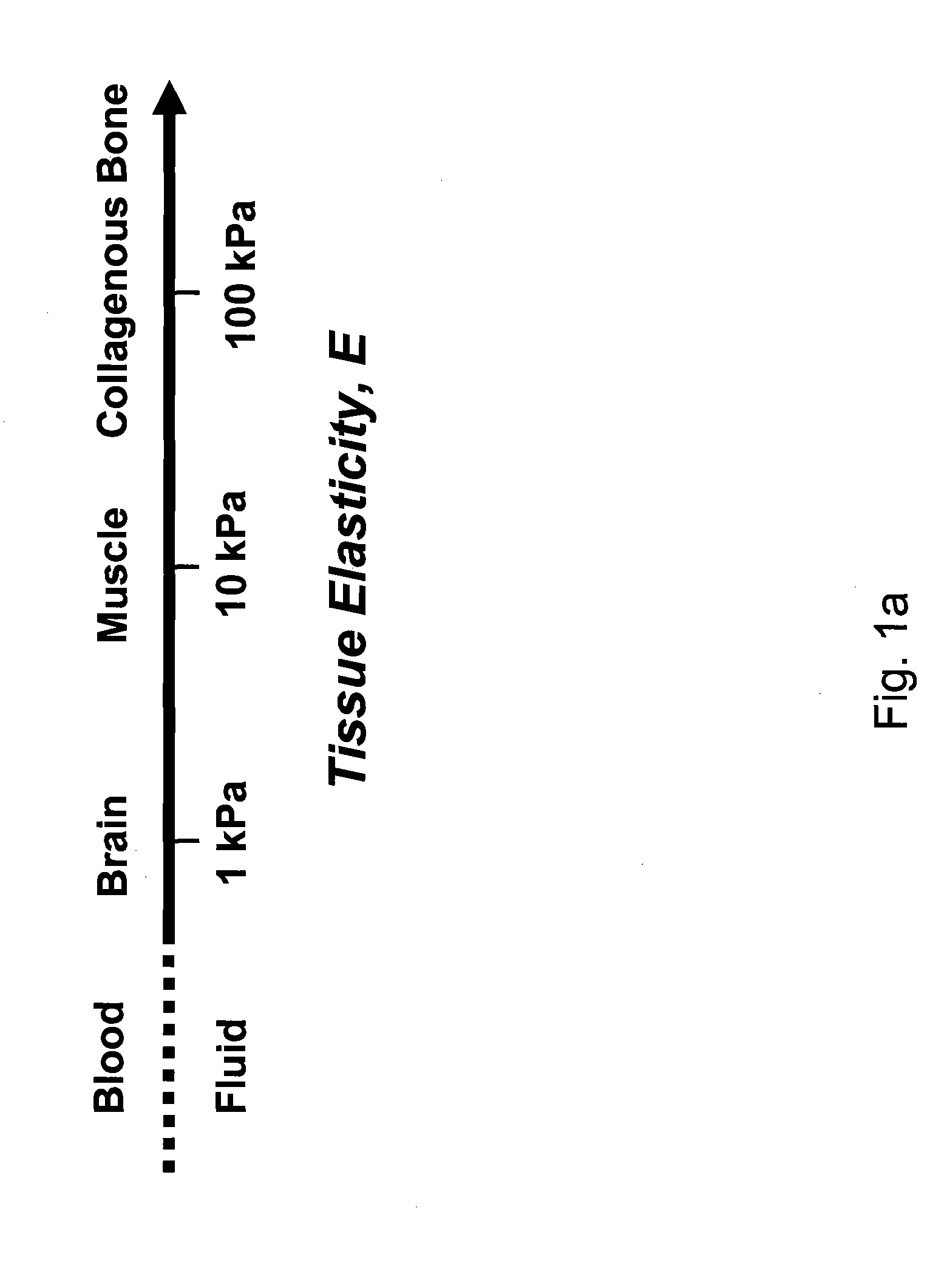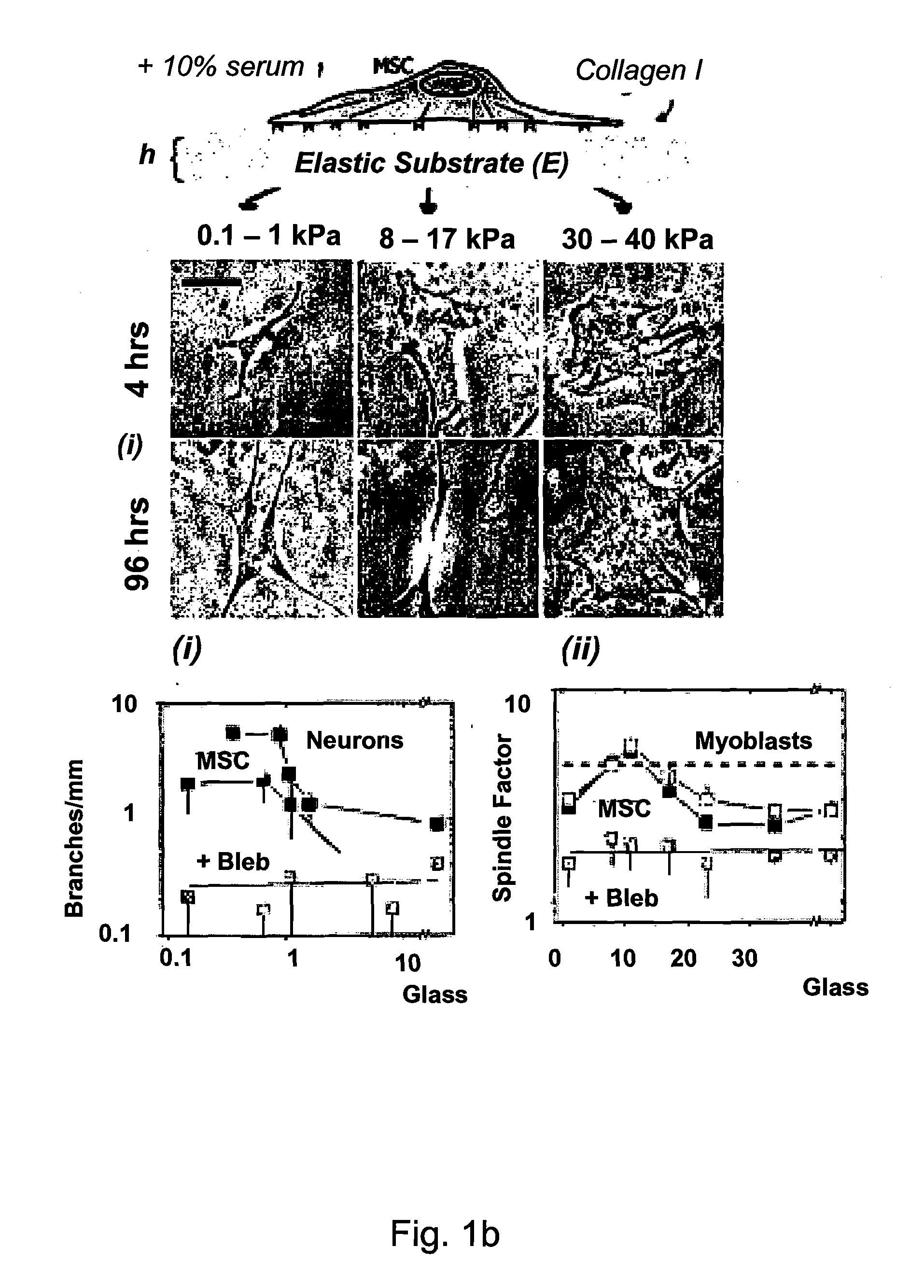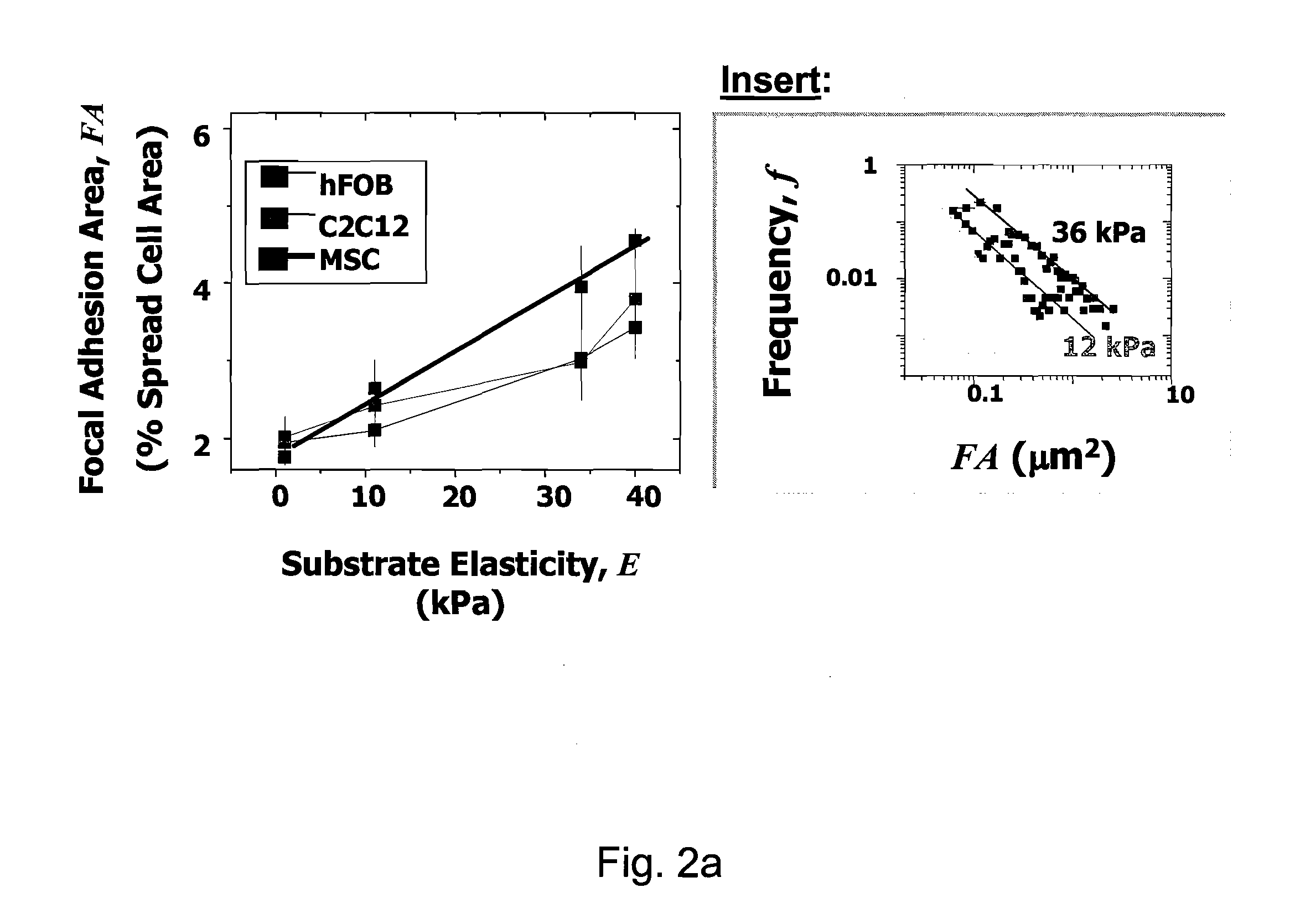Regulating Stem Cell Differentiation By Controlling 2D and 3D Matrix Elasticity
a stem cell and matrix technology, applied in the field of differentiation cells, can solve the problems of inability to dissociate, inability to effectively differentiate anchorage-dependent cells, and inability to grow normally viable tissue cells, so as to reduce reduce the effect of e*, and limit the differentiation of ms
- Summary
- Abstract
- Description
- Claims
- Application Information
AI Technical Summary
Benefits of technology
Problems solved by technology
Method used
Image
Examples
example 1
Differentiation Assays
[0083]1) Morphological Changes and Immunofluorescence: Changes in cell shape (CBFα1; Alpha Diagnostic International, San Antonio, Tex.), and neurogenesis with phosphorylated and dephosphorylated Neurofilament Heavy chain (NFH; Sternberger Monoclonal, Berkeley, Calif.) along with paxillin (Chemicon), skeletal muscle myosin heavy chain (Zymed Laboratories, S. San Francisco, Calif.), and non-muscle myosin IIA and B (Sigma) or rhodamine-labeled phalloidin.
[0084]Cells were fixed with formaldehyde, incubated in a 5% albumin blocking solution for 1 hour at 37° C., permeabilized with 0.5% Triton-X-100 and incubated overnight at 4° C. in 1:100 dilution of antibodies in PBS. Cells were then incubated for 1 hour at 37° C. in 1:500 FITC-conjugated secondary and 60 μg / mL TRITC-phalloidin. Finally, cells were incubated for 10 min. in 1:100 Hoechst 33342 (Molecular Probes Europe, Leiden, Netherlands) to label DNA. Cell morphology and fluorescently labeled cells were examined ...
example 2
The Stiffness Model
[0091]Although the following model may be far too simplistic to capture the complexities of stiffness-controlled gene regulation, the model is inspired by the atomistic complexity of cooperative release of oxygen under hydrostatic tension (Carey et al., J. Biol. Chem. 252:4102-4107 (1977)). The goal of the following minimal model was to fit the differentiation results with the simplest formalism to incorporate the most essential physico-chemical ingredients. Two key states were assumed for the limiting association of a key, lineage-specific component, “Xi.” This factor associates with apparent affinity K in or near the focal adhesions and obeys a molecular partition function (4), that cooperatively links to collagen (coil) with a Hill coefficient (ξ) to give:
ξ=1+[(K / E)coll]m Equation 7
[0092]In terms of energetics, K˜exp(-ΔG / kbT) and the matrix modulus E˜A exp(κx2 / kbT). Additionally, K is the relevant stiffness of matrix / membrane / adhesions, and x is a strain. If κ...
example 3
Tunable Mechanical Properties of a HA Hydrogel
[0095]A hydrogel system was developed based on a thiol-modified hyaluronic acid (HA-S) that meets all of the requirements outlined above: its Young's modulus E can be well-controlled by variation of the concentration of cross-linker or HA-S. This hydrogel can be polymerized without toxicity to the cells, allowing for 3D cell culture either by encapsulation of the cells during the polymerization process or using a ‘sandwich’ technique, where the cells are cultured on a 2D substrate and are subsequently covered with the HA-S hydrogel that forms a conformal overlay. Earlier reports of the mechanical properties of similar HA-S hydrogels also show a crosslinker concentration dependent elasticity but did not achieve the wide range of elasticities needed to encompass the physiological range (Ghosh et al., 2005, supra). While there are other reports on HA derived hydrogel systems, none of them exhibits a finely tunable elastic modulus within the...
PUM
| Property | Measurement | Unit |
|---|---|---|
| thickness | aaaaa | aaaaa |
| thickness | aaaaa | aaaaa |
| pH | aaaaa | aaaaa |
Abstract
Description
Claims
Application Information
 Login to View More
Login to View More - R&D
- Intellectual Property
- Life Sciences
- Materials
- Tech Scout
- Unparalleled Data Quality
- Higher Quality Content
- 60% Fewer Hallucinations
Browse by: Latest US Patents, China's latest patents, Technical Efficacy Thesaurus, Application Domain, Technology Topic, Popular Technical Reports.
© 2025 PatSnap. All rights reserved.Legal|Privacy policy|Modern Slavery Act Transparency Statement|Sitemap|About US| Contact US: help@patsnap.com



